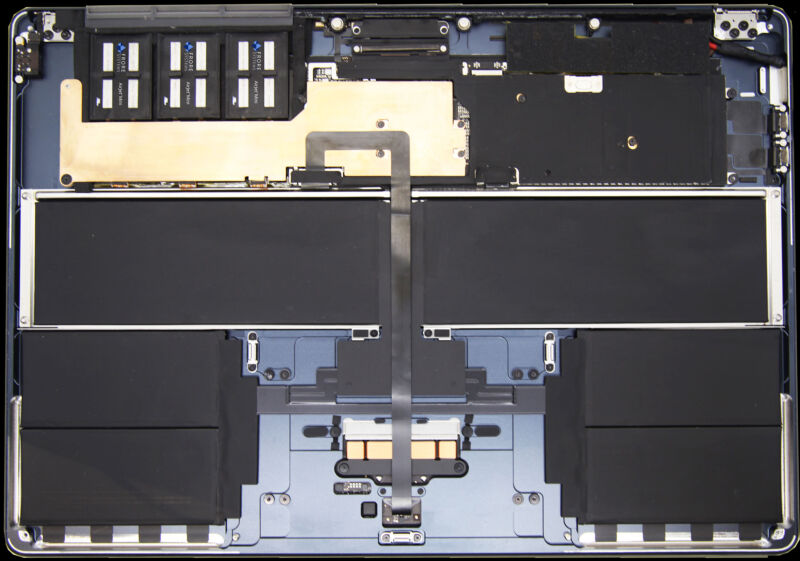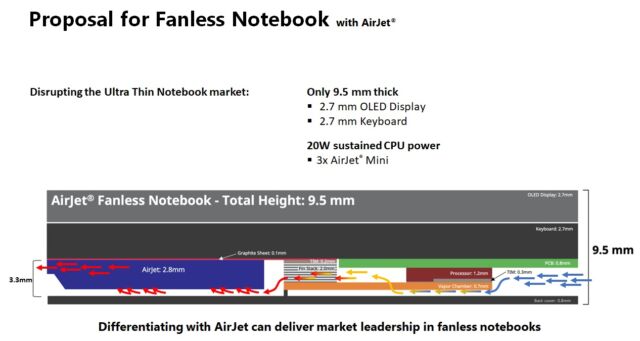
What if laptops could get fan-level cooling without moving parts? We could get thinner laptops, for one. We could also potentially squeeze more performance out of today’s already impressively thin designs.
That’s what San Jose, California startup Frore Systems is trying to convince laptop makers of as it looks for the first OEM to adopt what it describes as the first solid-state active cooling chip.
Most recently, the company equipped the M2 15-inch MacBook Air with three of its chips, dubbed AirJet Minis. Media witnesses to a recent demonstration reported that the chips helped bring MacBook Pro-comparable performance to sustained heavy workloads on the MacBook Air.
Not available in laptops yet
Before we get into the demo, note that Frore doesn’t have a publicly disclosed deal with any laptop vendors yet. In an email, Sue Ryan, Frore’s marketing VP, told me that Frore is “in collaboration with a number of the major laptop OEMs” but couldn’t furnish advocate details. Ryan added that Intel will feature Frore’s solution in future reference laptops.
Frore ran its MacBook Air demo without Apple’s input and acknowledges that its solution would work better if natively incorporated into the laptop design.
Frore has been hawking its heat pushers since the CES tech trade show in January. And its alternative to fans is actually set to be in one real product thus far: a Zotac Mini PC. Earlier this year, Zotac claimed the Zbox Pico PI430AJ would be available in Q4 2023 for $499.
SSD makers have also demoed products with Frore cooling. Ryan said that Frore is getting interest from various consumer segments, as well as from the industrial, datacenter, and automotive spaces. Laptops, IoT devices, LED lighting, and smartphones were among the categories named when I asked Ryan from where AirJet Minis are getting the most interest.
Solid-state cooling
Frore’s AirJet Mini is 0.11 inch (2.8 mm) thick, 1.08 inch (27.5 mm) long and 1.63 inch (41.5 mm) wide, while weighing 0.32 ounce (9 g).

Frore Systems
Frore says that the AirJet Mini works by using “tiny membranes that vibrate at an ultrasonic frequency.” A datasheet on Frore’s website [PDF] explains:
These membranes create a powerful flow of air that enters the AirJet through inlet vents in the top. Inside AirJet, the airflow is transformed into high-velocity pulsating jets. The pulsating jets of air eliminate heat from the heat spreader at the bottom of the AirJet with high efficiency. The flowing air reaches the same temperature as the heat spreader, which is in contact with the processor. Hot air exits to the side via an integrated spout.
Frore claims that the AirJet Mini consumes 1 W of power and dissipates 5.25 W, for a net of 4.25 W. Multiple AirJet Minis can be added to a device for greater heat dissipation. Frore claims its tech could impede dust from entering computers by incorporating filters over the vibrating membranes.

